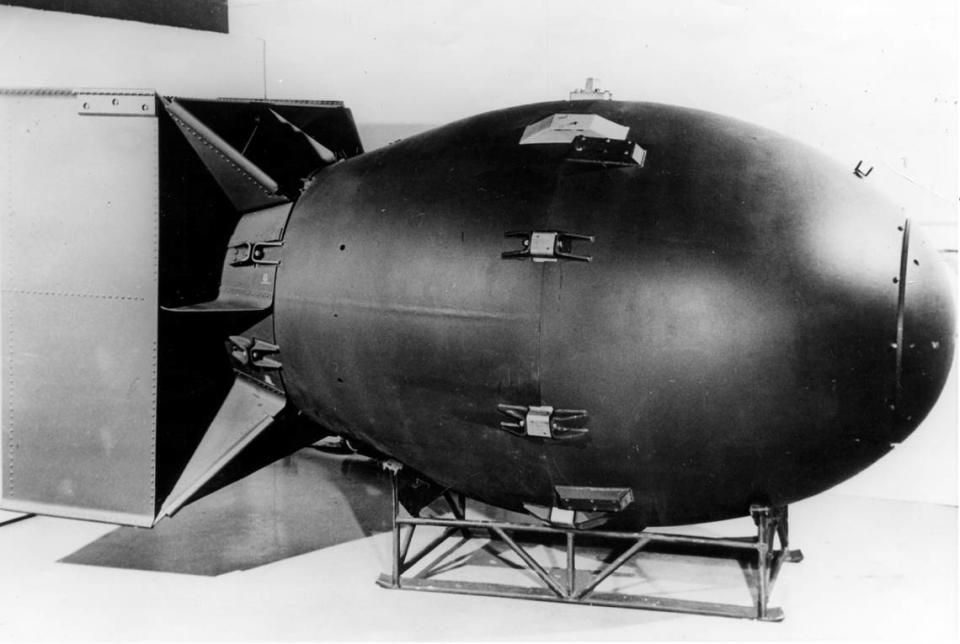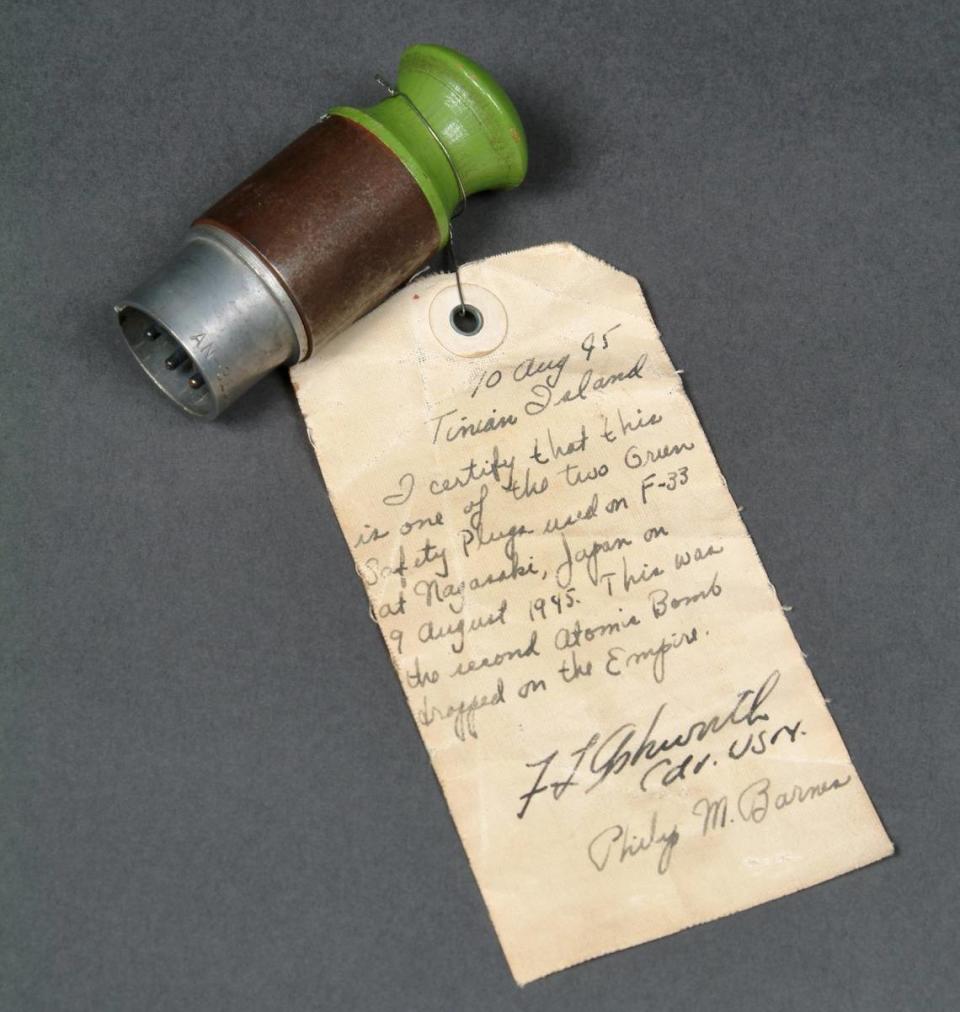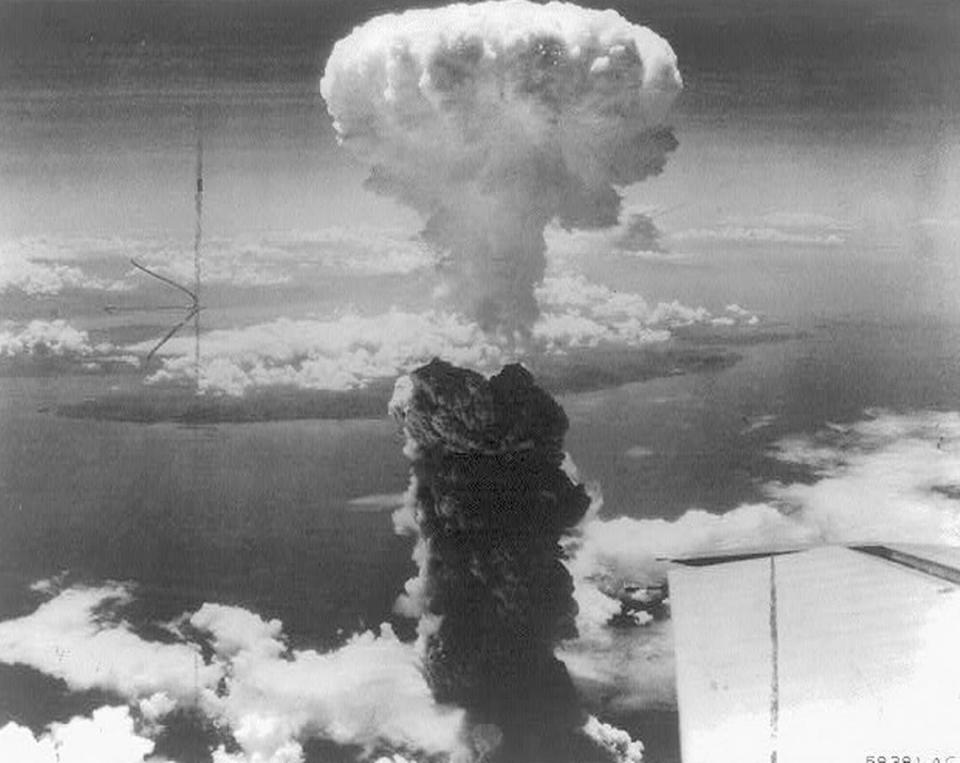Plug pulled to activate Oppenheimer’s atomic bomb is housed in this Missouri museum
- Oops!Something went wrong.Please try again later.
When “Oppenheimer” opens in theaters July 21, audiences will already know the ending. But the story of how America developed and ultimately used the first atomic bombs to effectively end WWII appears to pack a serious dramatic punch.
Though it may not be portrayed directly in Christopher Nolan’s film, decisions made by President Harry S. Truman were crucial to the deployment of the bombs known as Fat Man and Little Boy at Hiroshima and Nagasaki.

The Truman Library and Presidential Museum in Independence has collected various objects that bring parts of that history to life. They range from secret correspondence that alerted Truman to the existence of the Manhattan Project to the reports he received describing the wonder and horror of the first tests in the New Mexico desert.
The most notable artifact is the safety plug from the bomb that was used at Nagasaki, a small green capsule removed so the weapon could then be armed. It was donated in the 1980s by Philip Barnes, an engineer on the mission.

Mark Adams, education director at the library, says the plug looks so innocuous but it’s the closest thing we have to the beginning of the Atomic Age.
The display does make clear the enormity of the situation the new president faced after taking office in April 1945, with the end of the war in Europe and the birth of the United Nations immediately vying for his attention.

Adams believes Truman’s experience as a soldier in World War I contributed greatly to his decision to use the fearsome new technology in hopes of preventing the kind of massive American casualties that would have resulted from a land invasion of Japan.
There are chilling depictions of the toll the bombings took on their Japanese targets throughout the exhibits. The moral dilemmas Truman faced are acknowledged as well.
A display of paper cranes just a few feet from the safety plug alludes to the origami birds created by a young survivor of the bombing at Hiroshima before she died in 1955 from radiation-induced leukemia.
Adams points to a guest book that allows visitors to write down reflections on what they’ve experienced.
“Our mantra is you do the research, you come look, you examine and you decide, and that’s probably the best way for a presidential library to operate.”
Watch the video to learn more about the museum’s presentations on the legacy of the detonations of the atomic bombs over Japan.
Here are more things related to the Oppenheimer legacy
How Sadako Sadami”s origami brought nations closer
Hibakujumoku: A fascinating photographic study of atomic-bombed trees
There’s another big summer movie coming out the same day as “Oppenheimer”

